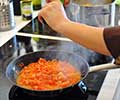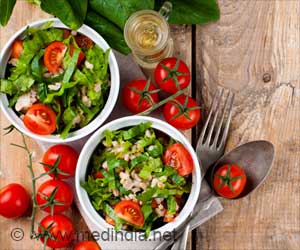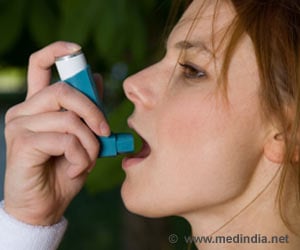Discover why ICMR urges Indians to steer clear of non-stick cookware and explore safer kitchen alternatives.
- ICMR alerts against toxic fumes from overheated non-stick cookware
- Alternatives like mud pots and stainless steel offer safer cooking options
- Safe usage tips ensure minimizing exposure to harmful chemicals
Dietary Guidelines For Indians
Go to source).
Scratched non-stick pans release toxic fumes, risking health. #ICMR #kitchensafety #medindia’
The Danger of Non-Stick Vessels
Chemical Composition of Non-Stick Cookware
Non-stick cookware, commonly coated with polytetrafluoroethylene (PTFE), also known as Teflon, presents a seemingly convenient solution for cooking with its non-reactive and almost frictionless surface. However, the safety of these utensils has been questioned due to the potential release of harmful chemicals under certain conditions (2✔ ✔Trusted Source
Non-stick surface
Go to source).
Risks Associated with Improper Usage
The ICMR highlights the risk of overheating non-stick pans, especially those with scratches or chips. When subjected to high temperatures exceeding 170 degrees Celsius, these damaged pans can emit toxic fumes and chemicals into the food being cooked, posing serious health hazards.
Health Implications
Exposure to the toxic fumes emitted by overheated non-stick cookware can result in respiratory irritation and flu-like symptoms, a condition known as polymer fume fever. Furthermore, research has connected the use of scratched non-stick pans to the release of microplastic particles into food, heightening worries about hormonal imbalances, fertility challenges, and a higher likelihood of cancer. Remarkably, even a single scratch on a non-stick pan can unleash thousands of these harmful microplastic particles into your food.
Alternatives to Non-Stick Cookware
1. Mud Pots: ICMR advocates for the use of eco-friendly alternatives such as mud pots, praising them as one of the safest options for cooking. Mud pots require less oil, promote even heat distribution, and help retain the nutritional balance of food.2. Granite Stone Utensils: Granite stone utensils, free from harmful chemical coatings, offer another viable alternative. These utensils are energy-efficient, retaining heat even after being turned off. Cooking in granite utensils on medium to high heat is recommended to preserve their non-stick properties.
3. Food-Grade Stainless Steel: Stainless steel cookware is endorsed by ICMR for its durability, ease of cleaning, and hygienic properties. Food-grade stainless steel does not leach chemicals into food, making it a safe and reliable choice for cooking.
4. Ceramic Cookware: Ceramic cookware, when properly cleaned and maintained, is also considered safe by ICMR. These utensils offer non-stick properties without the use of harmful chemicals, providing a healthier option for cooking.
Safe Usage Tips for Non-Stick Cookware
While non-stick cookware can still be used safely, certain precautions should be taken:- Avoid preheating empty non-stick pans; if preheating is necessary, use oil
- Use wooden or silicone utensils to prevent damage to the coating
- Ensure proper ventilation in the kitchen to dissipate fumes
- Avoid cooking on high heat, as it can accelerate the breakdown of the non-stick coating
- Refrain from stacking non-stick pans, as this may cause friction and lead to coating damage
References:
- Dietary Guidelines For Indians - (https://main.icmr.nic.in/sites/default/files/upload_documents/DGI_07th_May_2024_fin.pdf)
- Non-stick surface - (https://en.wikipedia.org/wiki/Non-stick_surface)
Source-Medindia









